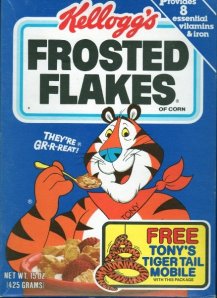The idea behind a paleolithic diet is that you avoid foods that cause gut irritation and foods that cause hormone imbalances and insulin sensitivity issues. This means avoiding all grains, legumes and dairy products as well as refined sugar, processed food chemicals and modern vegetable oils. But there are some foods are not clearly safe or unsafe. You may choose to include or to avoid these foods in your implementation of paleolithic nutrition. Many advocates of paleolithic nutrition suggest cutting out all gray area foods for a month or two, then adding them back in one at a time and see how they make you feel. They become especially important factors if you are suffering an auto-immune disease or a history of poor gut health.
Here are the main culprits (although there are others, so look for future posts):
Nuts and Seeds: Nuts and seeds do still contain small amounts of gut irritants (in this case, saponins) and anti-nutrients (in this case, phytates, which inhibit the absorption of vitamins and minerals). The phytate content can be minimized by soaking nuts and seeds overnight (then drying them in the oven at low temperature or in a food dehydrator) before eating them. Most nuts and seeds also contain more omega-6 fatty acids than omega-3 fatty acids (ratios ranging from 1:3 to 1:10), which isn’t helpful as we strive for a 1:1 ratio of omega-3 to omega-6 fatty acids in our diets.
Goat Dairy and Dairy from Pasture-fed Cows: Dairy products are blacklisted for two reasons. They can irritate the gut in some people and they also cause a spike in your insulin disproportional to the amount of sugar in milk (even cheese, which is mostly protein and fat, spikes your insulin). Both of these are reduced in goat dairy and in dairy from pasture-fed cows, many people can tolerate these quite well. Another bonus to dairy from pasture-fed cows is that they contain Conjugated Linoleic Acid and more omega-3 fatty acids.
Nightshades (Peppers, Eggplants, Tomatoes and Potatoes): Vegetables in this family contain small amount of poisonous glycoalkaloids (like tomatine, solanine and chaconine). Depending on your lineage, you may or may not be sensitive to these chemicals (if you have any native american ancestry, you are probably okay). A way to minimize your exposure is eat the ripest version of the vegetable (ripe tomatoes, red bell peppers, etc.). Also, potatoes seem to be especially problematic, so many paleo dieters avoid potatoes even if they include the other nightshades in their diet. If you do want to eat potatoes, peeling them gets rid of most of the glycoalkaloids.
Eggs: Yes, eggs can be a problem for some people too. A chemical called lysozyme in the egg white can form globs of molecules in the gut and sneak things across the gut lining that shouldn’t be able to get into your blood stream. Isn’t it strange to realize that egg yolks are the healthy part of the egg? (Especially when you eat omega-3 or free-range eggs). Paleo dieters hate to give up eggs, so I suggest only doing this if you have a diagnosed autoimmune disease.
Caffeine: This is a touchy subject for me because I know that I should give up coffee (at least for a month or two to see how I do), but I just don’t want to. The issue with coffee and other caffeinated beverages is that it increases your cortisol (stress hormone) levels. Most of us are trying to reduce stress, not increase it, so large amounts of caffeine are just not useful. In a perfect world, we would all get enough sleep that we would wake up refreshed and the thought of a double americano with heavy cream would never cross our minds. If you can stomach the idea of giving this up, I suggest doing it. Otherwise, do what you can to minimize your caffeine intake. You could try decaf (which has about a quarter the caffeine of regular coffee) or stick with tea. It also helps to drink coffee black because the fat in heavy cream can increase how quickly the caffeine gets into your blood stream.
Alcohol: After watching my childhood dog get completely drunk from eating rotting plums left on the ground after dropping from our plum tree, I feel confident that our paleolithic ancestors probably consumed some alcohol in the form of fermented fruit. The issue with alcohol is always dose. Ethanol is a toxin and it increases your blood triglycerides (increasing your risk of cardiovascular disease). You don’t need to cut alcohol out, but do try and stick to one or two drinks at a time, no more than a couple of times per week… or less. Also, be aware that most beer contains gluten. Spirits generally don’t and wine (especially red) has some great antioxidants in it (reducing your risk of cardiovascular disease!). If you are having issues with sleep quality though, I suggest cutting alcoholic beverages out completely, at least for a while.
With all of these gray area foods, I suggest considering them as possible culprits for continued health issues as you experiment with paleolithic nutrition. Maybe it’s too overwhelming to cut them out at first. Maybe you feel great even when you eat them. Maybe you want to consider a one month trial of omitting them from your diet to see how you feel. I personally do better without nuts. And I have a strong suspicion that I should give up caffeine. This is one of the many aspects of paleolithic nutrition that is completely individual.







